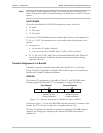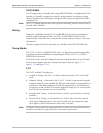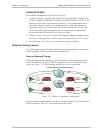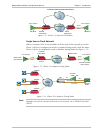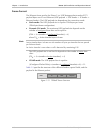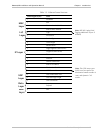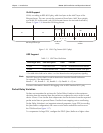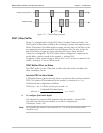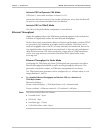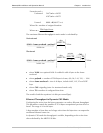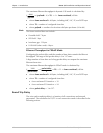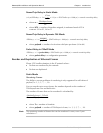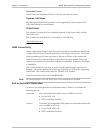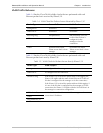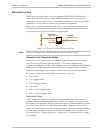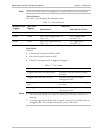
Chapter 1 Introduction IPmux-1/1E Installation and Operation Manual
1-20 Functional Description
Intrinsic PDV in Dynamic CAS Mode
I.PDV (ms) = active time slot bytes in frame X 0.125
Active time slot bytes in frame is the number of bytes per active time slot that will
be sent on every frame transmitted over the Ethernet.
Intrinsic PDV in CESoIP Mode
The value of the packet delay configuration is user-defined.
Ethernet Throughput
Higher throughput reduces the IP/Ethernet overhead segment of the total packet
and thus can significantly reduce the total Ethernet throughput.
On the other hand, packetization delay and intrinsic packet delay variation (PDVT)
are increased; this contributes to a higher end-to-end delay. This effect can be
small and negligible when a full E1 (or many timeslots) are transferred, but can be
very significant when few timeslots are transferred. In this case, the packetization
delay and the intrinsic PDV when configuring a large value of TDM bytes/frame
can be very large and may exceed the maximum PDVT (jitter) buffer on the
receiving end.
Ethernet Throughput in Static Mode
Configuring the TDM bytes per frame (TDM bytes/frame) parameter can reduce
Ethernet throughput (bandwidth or traffic traveling through the Ethernet). This
parameter controls the number of TDM bytes encapsulated in one frame.
The TDM bytes/frame parameter can be configured to n x 48 bytes where n is an
integer between 1 and 30.
To calculate Ethernet throughput and intrinsic PDV as a function of
TDM bytes/frame:
Ethernet load (bps) =
[(frame overhead (bytes) + TDM bytes/frame) x 8] x frames/second
Frame overhead = Ethernet overhead + IP overhead = 46 bytes
The frame overhead does not include:
• Preamble field: 7 bytes
• SFD field: 1 byte
• Interframe gap: 12 bytes
• VLAN field (when used): 4 bytes.
Note



